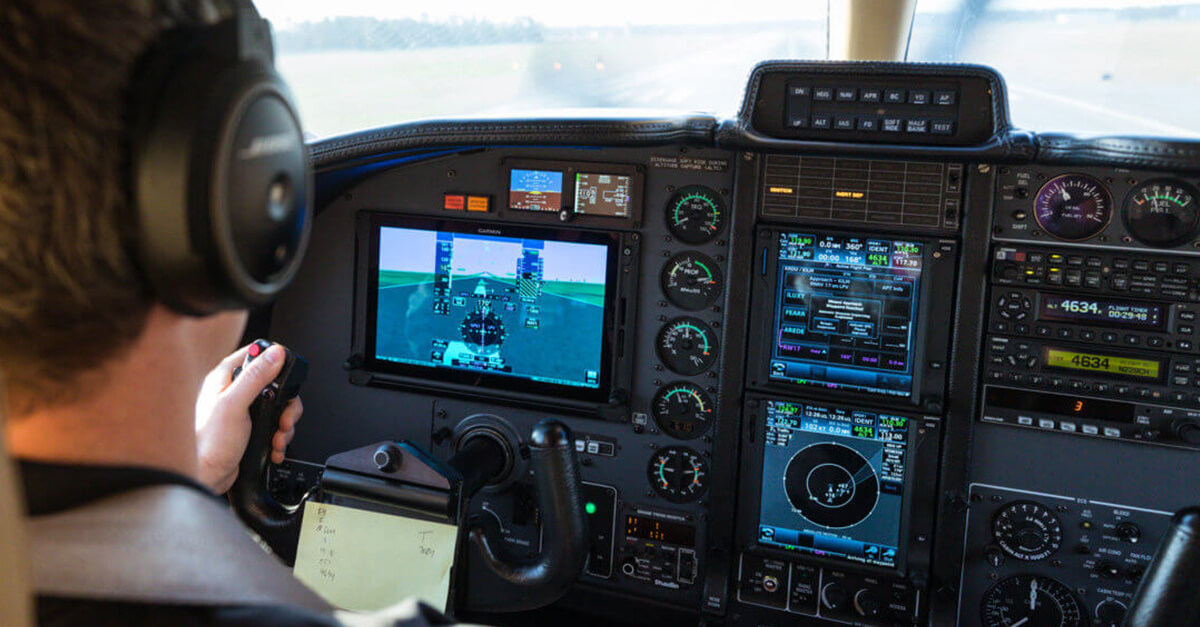
Jan. 24, 2020
A recent NBAA webinar provided an update on ADS-B implementation and addressed member questions about what the full implementation of the ADS-B requirements means for business aviation, including issues related to privacy and security.
NBAA’s Doug Carr, vice president of international and regulatory affairs, who led the webinar along with Heidi Williams, director of air traffic services and infrastructure, encouraged participants to use an automated tool, the Public ADS-B Performance Report (PAPR), to validate ADS-B Out installations.
“It’s important that operators take the opportunity to ask the FAA about the performance of their equipment,” said Carr, explaining there is no indication in an aircraft to show proper performance. “This is a non-jeopardy request. The FAA will simply provide the operator a report of what the air traffic system sees coming from their aircraft. This will allow an operator to resolve any equipment performance issues.”
Carr especially cautioned operators that equipped with ADS-B Out prior to 2011 to validate that their equipment is compliant, as ADS-B version 1 DO – 260(A) is not compliant with today’s ADS-B requirements contained in FAR Part 91.225 and 91.227.
Maintaining Privacy
“NBAA has long been a collaborator and partner with the FAA to ensure privacy and security of your aircraft information, starting with the Block Aircraft Registry Request [BARR] program implemented in 1997,” said Williams. “Reports of aircraft participating in the BARR program appearing on airspace and airport situational displays caused real concern. This led to development of the Limiting Aircraft Data Displayed [LADD] program.”
The LADD program allows aircraft operators to block real-time position and identification information for their aircraft. Information displayed via ADS-B Out transponders, which transmit aircraft identification, position, altitude and velocity to other aircraft and air traffic control, can be used to identify aircraft registration information. In the near future, participating operators may choose individual vendors to receive their aircraft data.
Operators that participated in BARR are automatically registered in LADD, explained Williams. Other operators may apply at https://ladd.faa.gov.
The Privacy ICAO [International Civil Aviation Organization] Address (PIA) program allows requesting operators to use an alternative, temporary ICAO address not publicly connected with their aircraft registration while ensuring compliance with ICAO identification requirements.
Carr said operators must obtain a third-party call sign, commercially available from various flight services providers, to use as a Flight ID contained within the Mode S Transponder data signal.
“The use of PIA and call signs allow the operator to completely decouple the aircraft from aircraft registry information. However, law enforcement officials, the FAA and others including the Department Homeland Security will still have access to needed information,” he said.
Carr cautioned webinar participants that the PIA is limited to the operations over the continental United States for now. Operators conducting international operations, including the use of overwater routes off the East Coast, offshore routes in the Gulf of Mexico or U.S.-to-U.S. flights involving overflights of Mexico or Canada must use their originally issued ICAO code. NBAA is currently working with the FAA to expand the PIA coverage area.
Further, each aircraft and avionics suite will require different processes for changing the ICAO code. Installing a PIA code will trigger the requirements of 91.413.
Williams discussed two other tools available to operators: the Service Availability Prediction Tool (SAPT) and ADS-B Deviation Authorization Pre-Flight Tool (ADAPT).
The SAPT helps operators comply with 91.227, which requires operators to ensure they are capable of meeting Navigation Accuracy Category of position and Navigation Integrity Category values for the duration of any flight by predicting ADS-B sufficiency in specific flight times and equipment configurations.
Finally, ADAPT allows operators without ADS-B or with inoperative ADS-B to request an authorized deviation from ADS-B equipment requirements from the FAA. Importantly, operators should not view this tool as relief from the ADS-B installation mandate.
In the Jan/Feb 2020 edition of NBAA’s Business Aviation Insider magazine, association President and CEO Ed Bolen directly addresses the ADS-B privacy win for member companies. The same edition of the magazine also has a “Regulatory Hot Topics” feature, providing more information for operators to avail themselves of the new tools.
For those attending the Jan. 29 NBAA Forum in West Palm Beach, FL, Carr and Williams will be on-hand to address questions and provide an update on ADS-B implementation. Their session takes place at 11:30 a.m. View the forum program.
Hear podcasts, read web stories and get up-to-the minute information about ADS-B privacy by visiting NBAA’s ADS-B Resource Page.


 International Business Aviation Council Ltd.
International Business Aviation Council Ltd.